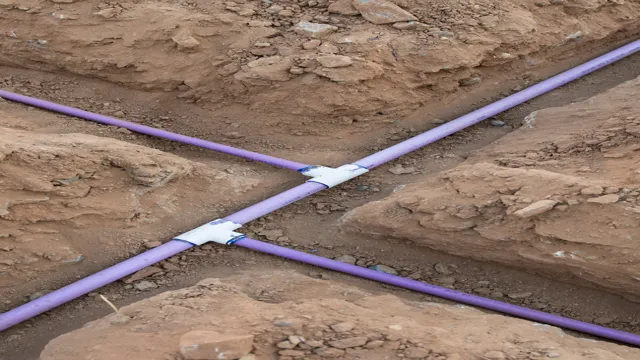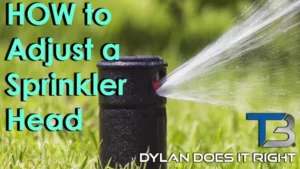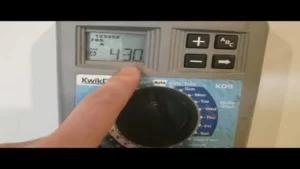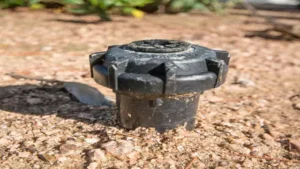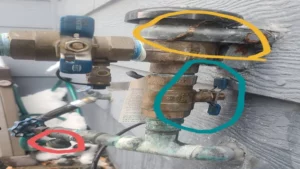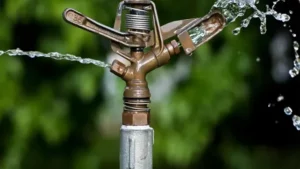Do you want your lawn to have the most beautiful and lush green of all? Then you need to invest in a good sprinkler system! However, not all sprinkler systems are created equal, and one crucial factor to consider is the size of the PVC pipe used. The size of the pipe can affect the water pressure and flow rate, which, in turn, affects the effectiveness of your sprinklers. So how do you know what size pipe is best for your sprinkler system? In this blog, we’ll guide you through everything you need to know about choosing the right size PVC pipe for your sprinkler system, including factors to consider and tips for installation.
With this information, you’ll be well on your way to having the perfect lawn!
Introduction
If you are planning to install a sprinkler system in your garden or lawn, it is essential to choose the right size of PVC pipe. You will need to consider the water pressure, flow rate, and the distance from your main water line to the sprinkler heads. For standard residential applications, 1/2-inch and 3/4-inch PVC pipes are commonly used for the irrigation system.
If you require higher water flow rates, you may want to consider using larger diameter PVC pipes. The 1-inch or 1 1/4-inch pipes are suitable for larger properties or commercial applications. Keep in mind that the size of the PVC pipes will significantly affect the water pressure and flow rate in your system.
Therefore, it is vital to consult with an experienced irrigation contractor that can help you choose the appropriate size of PVC pipe for your sprinkler system. Using the right size will ensure optimal performance and water efficiency, ensuring your lawn or garden stays healthy and hydrated all year round.
Why PVC Pipe is a Great Choice
PVC pipe is a great choice for many reasons, but the most important one is its versatility. It can be used for a wide range of applications, from plumbing and drainage to irrigation and electrical conduits. PVC pipe is also incredibly durable and resistant to chemicals, making it a reliable option for harsh environments.
Additionally, PVC pipe is lightweight and easy to install, making it a popular choice for DIY projects. Overall, there are many reasons why PVC pipe is a great choice for any project, and it continues to be a top choice for contractors and homeowners alike. So, if you’re looking for a reliable, versatile, and affordable piping solution, look no further than PVC pipe!
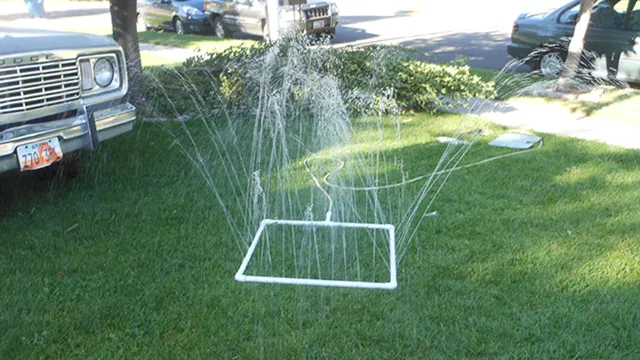
Factors to Consider for Sprinkler System PVC Pipe Sizing
Sprinkler System PVC Pipe Sizing When it comes to designing a sprinkler system, it’s essential to consider the PVC pipe’s sizing, which is a crucial factor that determines the system’s overall functionality and performance. PVC pipe sizing refers to the diameter and length of the pipe, and it impacts the amount of water that flows through the system. It’s crucial to select the right diameter of the PVC pipe because selecting the wrong size can lead to underperforming or overperforming systems.
Inadequate diameters can limit the system’s water flow, while oversized pipes can increase water pressure, leading to burst pipes. Factors that impact sprinkler system PVC pipe sizing include the system’s size, design, water source availability, water quality, designated use, and more. By understanding these factors and working with professional contractors, you can ensure your sprinkler system is appropriately sized for optimal performance.
Determining the Correct PVC Pipe Size
When designing a sprinkler system, one of the most important decisions is determining the correct PVC pipe size. The size of the pipe will dictate the amount of water that can flow through it, so it’s important to choose the right size for your needs. One way to determine the correct size is to calculate your system’s water flow rate in gallons per minute (GPM), then match it to the appropriate pipe size using a sizing chart.
Another factor to consider is the distance between the water source and the sprinkler heads, as longer distances will require larger pipes to maintain adequate water pressure. It’s also essential to account for any elevation changes or obstacles in the system that may affect water flow. By taking these factors into account, you can choose the right PVC pipe size and ensure your sprinkler system operates efficiently and effectively.
So what size PVC for sprinkler system? It ultimately depends on your system’s unique needs, but taking the time to properly size your pipes will pay off in the long run.
Flow Rate Considerations
When it comes to determining the correct PVC pipe size for your project, one of the most important considerations is the flow rate. The flow rate is the amount of water that passes through a pipe over a specific period of time. If your pipe is too small for your intended flow rate, it can cause problems such as increased pressure, reduced flow, and even burst pipes.
On the other hand, if your pipe is too large, it can be costly and unnecessary. To determine the correct pipe size, you’ll need to consider factors such as the size of your water supply, the number of fixtures or appliances that will be using water, and the length of the pipe. It’s also important to keep in mind that flow rates can change depending on factors such as altitude, temperature, and water pressure.
By taking the time to properly calculate your flow rate and choose the appropriate PVC pipe size, you can ensure that your project runs smoothly and efficiently, without any costly or time-consuming setbacks.
Pressure Considerations
When deciding on the correct PVC pipe size, pressure considerations are important. PVC pipes come in various sizes and thicknesses, so determining the right one may seem daunting. To start, calculate the pressure the pipe will need to handle from the flow rate and the design of the system.
A pipe that is too small will cause the pressure to exceed the pipe’s capacity, eventually causing it to burst. Conversely, a pipe that is too large will cause low flow rates and higher system costs. It’s also important to consider the velocity of the fluid; if it’s too fast, it can cause erosion and corrosion, leading to leaks and failures.
With careful consideration of these factors, the right PVC pipe size can be determined, ensuring the system’s longevity and efficiency.
Calculating the Required Pipe Diameter
One of the most crucial aspects of any plumbing project is determining the correct PVC pipe size. Calculating the required pipe diameter is essential in ensuring optimal fluid flow and preventing any potential leakage. When choosing a PVC pipe size, it is important to consider the intended use of the pipe, the volume of fluid that will be flowing through it, and the distance the fluid needs to travel.
Additionally, the pipe size should be chosen based on the highest flow rate that it will encounter. It is also essential to take into account the pipe’s burst pressure and tensile strength, ensuring a safe and durable system. By accurately calculating the required PVC pipe size, you can ensure the success of your plumbing project while avoiding issues such as blockages, leaks, and system failures.
Remember, a little math can go a long way in achieving a functioning and efficient plumbing system.
Installation Tips for PVC Pipe in a Sprinkler System
When installing PVC pipe in a sprinkler system, it’s important to consider the size of the pipe. The size of the PVC pipe will vary depending on the size of the sprinkler heads, the water pressure, and the distance between sprinklers. Generally, for residential sprinkler systems, ¾-inch PVC pipe is sufficient.
However, for larger commercial systems, 1-inch or 1 ½-inch PVC pipe may be necessary to provide enough water flow. It’s also important to use the appropriate PVC pipe fittings and glue to ensure a proper and secure connection. When installing PVC pipes, make sure to properly prime and clean the joints before applying the glue.
Additionally, it’s important to avoid any sharp bends or turns in the pipe that could cause a reduction in water flow and pressure. By following these tips, you can ensure a successful installation of PVC pipe in your sprinkler system for optimal performance and efficiency.
Proper Pipe Placement and Support
Proper pipe placement and support are critical factors when setting up a PVC pipe irrigation system. It ensures that the pipes remain functional and effectively convey water throughout the system. PVC pipes can be affected by earth movement and other stresses, which is why it’s important to position them deep enough in the ground to prevent damage due to external factors like lawnmowers or foot traffic.
Additionally, proper support is vital for maintaining consistent water pressure and preventing sagging or bursting. Installing a PVC pipe too close to concrete surfaces like curbs or sidewalks can cause the pipe to rub against the concrete, leading to damage over time and result in leaks. To mitigate this problem, it’s important to use proper clamps and hangers to support the PVC pipes, while also ensuring they’re placed at the right distance apart.
With these installation tips, homeowners can have an efficient and reliable sprinkler system that will keep their lawn healthy all year round.
Gluing PVC Pipe Together
Installing a PVC pipe in a sprinkler system seems like a daunting task, but with the right tools and techniques, you can do it yourself. One crucial step in the process is gluing the PVC pipe together. Firstly, make sure the end of the pipe you’ll be inserting into the fitting is clean and free of debris.
Apply PVC primer to the end of the pipe and the inside of the fitting, followed by PVC cement to the same areas. Make sure to push the pipe into the fitting promptly and hold it in place for at least 30 seconds. Remember, the key to successfully gluing PVC pipe together is speed and precision.
The glue sets quickly, so make sure everything is lined up correctly before cementing anything together. Whether you’re a DIY-er or an experienced plumber, gluing PVC pipe together is an essential skill that is easy to master with a bit of practice. By following these tips, you can install your sprinkler system with confidence, knowing that your PVC pipe connections are secure and leak-free.
Conclusion
In the world of sprinkler systems, size really does matter when it comes to PVC pipes. Choosing the right size can mean the difference between a healthy, lush lawn and a sad, dry one. So, don’t be fooled by a small diameter – bigger is usually better in this case.
And as they say, go big or go home – in this case, to a barren wasteland devoid of beautiful greenery.”
FAQs
What is PVC and why is it used for sprinkler systems?
PVC stands for polyvinyl chloride, which is a type of plastic commonly used in many different applications, including irrigation systems. PVC is often chosen for sprinkler systems because it is durable, lightweight, and cost-effective.
What size PVC pipe do I need for my sprinkler system?
The size of PVC pipe you need for your sprinkler system will depend on a number of factors, including the size of your yard and the number of sprinkler heads you plan to install. In general, most residential sprinkler systems use 1/2-inch or 3/4-inch PVC pipe.
How do I choose the right PVC fittings for my sprinkler system?
Choosing the right PVC fittings for your sprinkler system will depend on your specific needs and preferences. Some factors to consider when selecting fittings include the size of your PVC pipe, the type of sprinkler heads you plan to install, and the layout of your irrigation system.
Can I use PVC cement to connect my sprinkler system components?
Yes, PVC cement is commonly used to connect PVC pipe and fittings in sprinkler systems. PVC cement creates a strong bond between the components, which helps to prevent leaks and ensure proper water flow.
How deep should I bury my PVC pipe for my sprinkler system?
The depth at which you should bury your PVC pipe for your sprinkler system will depend on local building codes and your specific system design. In general, most residential sprinkler systems bury the PVC pipe at a depth of 8-12 inches.
Can I use PVC pipe for my underground sprinkler system?
Yes, PVC pipe can be used for underground sprinkler systems. However, it is important to use the appropriate type and size of PVC pipe to ensure that your system operates properly and does not leak.
What are some common problems that can occur with PVC sprinkler systems?
Some common problems that can occur with PVC sprinkler systems include leaks, clogs, and damage from freezing temperatures. To prevent these issues, it is important to follow proper installation and maintenance procedures for your system.
